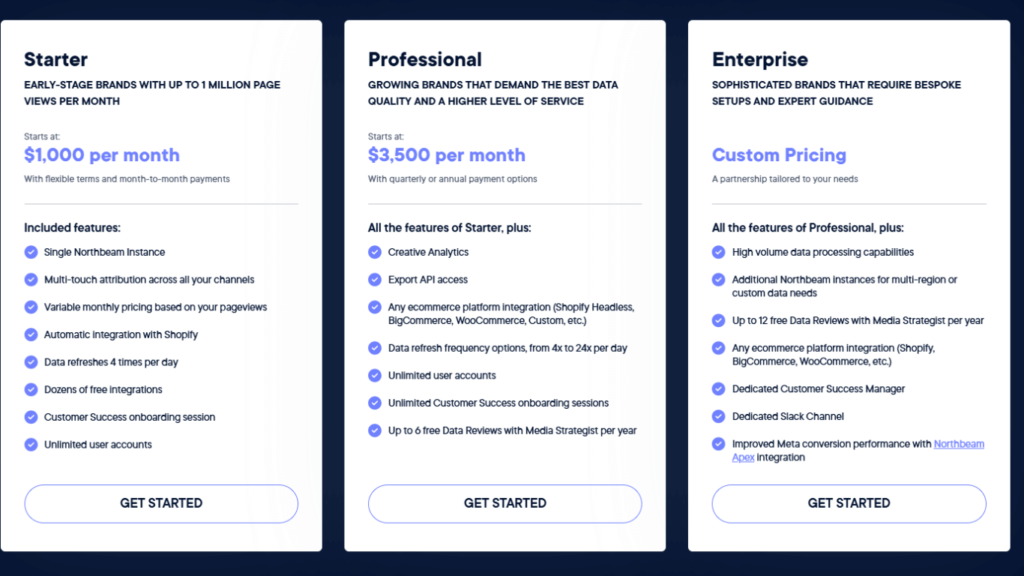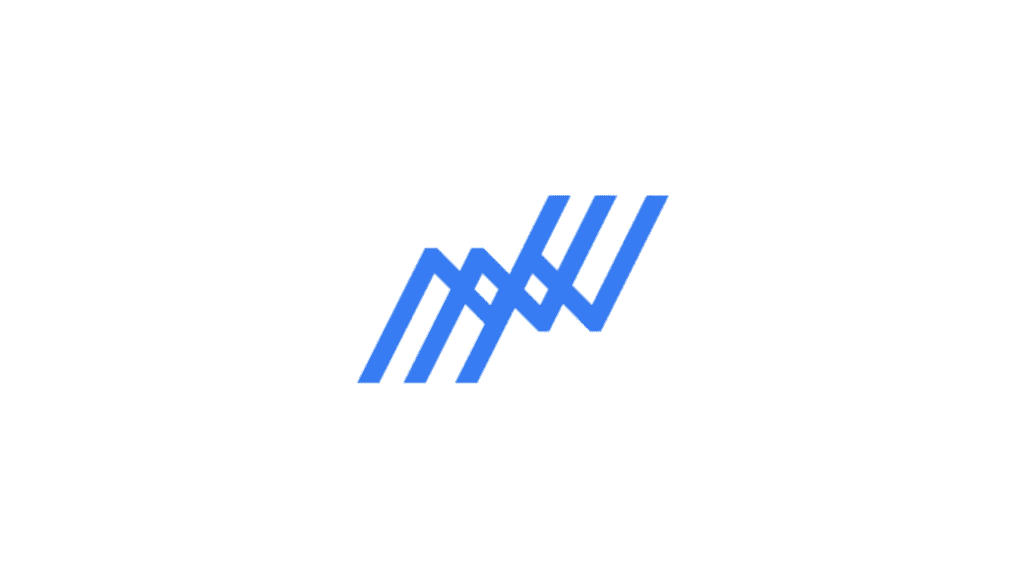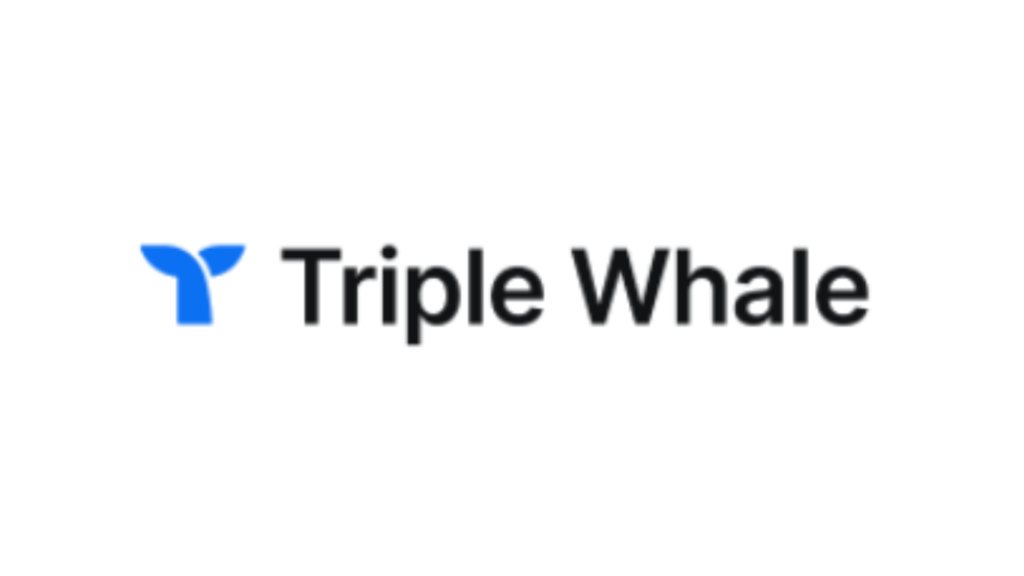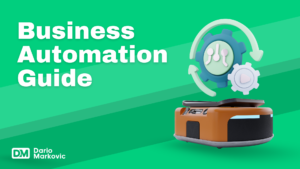In the world of eCommerce marketing, attribution tracking is essential for understanding where your sales come from. Two of the most popular tools in this space are Northbeam vs Triple Whale.
While both offer powerful insights, they cater to different types of businesses.
Let’s break down their strengths, weaknesses, and which one might be the best fit for your brand.
Who is Each Tool Best For?
Northbeam, is a more advanced, enterprise-level attribution tool that is platform-agnostic. It provides a more holistic approach to tracking, but with a steeper learning curve and higher pricing.
Triple Whale is a user-friendly, all-in-one analytics platform designed for small to medium-sized eCommerce businesses using Shopify. It provides a streamlined attribution model that closely aligns with platform data, making it an easy transition for business owners.
- Triple Whale:
-
Founder-operators & solo entrepreneurs
-
Small to mid-sized Shopify brands ($10M–$40M in sales)
-
Businesses looking for an easy-to-use dashboard
-
Teams that prefer in-platform-like attribution models
- Northbeam:
-
Media buyers & data teams
-
Enterprise-level brands ($40M+ in sales)
-
Companies running omnichannel campaigns
-
sinesses that require highly detailed attribution models
Northbeam vs Triple Whale: A Quick Comparison
Northbeam
Triple Whale
Northbeam: Features, Pros & Cons, Pricing
- A unified data set for marketing, pixel tracking, and advanced machine learning for real-time data processing
- In-depth marketing performance tracking
- ROI optimization
- First-party data integration
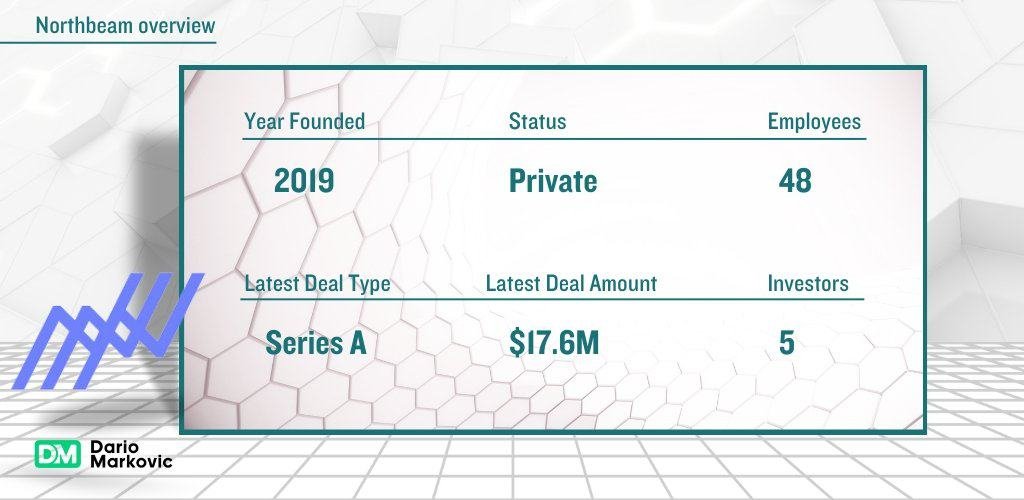
Key Features
The key features of Northbeam elevate b2b and b2c digital marketing strategies.
The platform offers:
- Marketing attribution models that utilize machine learning to analyze impression and ad engagement data
- Integration of predictive analytics to aid in making intelligent attribution decisions
- Promotion of profitable growth
The platform distinguishes itself with an advanced reporting feature, enabling users to generate custom reports and monitor Lifetime Value (LTV).
Northbeam offers various customization options, such as setting up custom labels, tagging campaigns, adding custom metrics, and exporting data into custom reports.
Their top-notch customer segmentation tools allow businesses to tailor their marketing efforts to specific customer segments.
Pros
- Accurate Attribution – Fractional modeling prevents over-attribution.
- Cross-Platform Compatibility – Works with Shopify, WooCommerce, and more.
- Advanced Analytics – Provides deep insights into customer journeys.
- Media Mix Modeling (MMM) – Optimizes ad spend with predictive analytics.
- Longer Attribution Windows – Tracks conversions beyond platform limits.
Cons
- High Cost – Starts at $1,000/month, making it expensive for smaller businesses.
- Steep Learning Curve – Requires data expertise to interpret reports effectively.
- No Free Plan – Unlike Triple Whale, it doesn’t offer a free dashboard.
- Complex Setup – DNS-based tracking requires technical implementation.
- Not Shopify-Specific – Works with multiple platforms but lacks Shopify-native perks.
Pricing
Northbeam offers three pricing plans.
1. Starter ($1,000/month) – Best for early stage brands with up to 1M page views. Includes multi-touch attribution, Shopify integration, data refreshes 4x/day, and unlimited users.
2. Professional ($3,500/month) – Adds creative analytics, export API, advanced platform integrations, up to 24x/day data refreshes, and media strategist reviews.
3. Enterprise (Custom pricing) – Tailored for large brands, offering high-volume data processing, dedicated support, multiple Northbeam instances, and enhanced Meta conversion performance.
If you’re wondering whether Northbeam is worth the investment, check out my in-depth breakdown of Northbeam’s pricing and features here.
It provides a detailed look at what each plan offers and helps you decide if it’s the right fit for your business.
Target Market
Large-scale and enterprise-level e-commerce businesses seek comprehensive analytics and attribution insights from Northbeam’s target market.
Their offerings include multi-touch attribution and media mix modeling powered by industry-leading machine learning. These tools provide extensive insights into the customer journey, helping businesses differentiate between new and returning customers.
Northbeam has seen successful adoption by large-scale or enterprise-level e-commerce businesses.
For example, MyHD experienced an 84% improvement in ROAS, while PetMeds enhanced customer lifetime value through Northbeam’s data-driven insights, resulting in the growth and conversion of high-value customers.
Triple Whale: Features, Pros & Cons, Pricing
On the other side of the ring, Triple Whale is an e-commerce analytics platform renowned for its real-time financial reporting, customizable dashboard, and attribution modeling.
The platform is specifically designed to cater to the needs of small to mid-sized businesses. Its management and automation of analytics and attribution, merchandising, and forecasting capabilities stand out.
The customizable dashboard of Triple Whale offers a wide range of customization possibilities, including chart zooms, drill-downs, interactive elements, and AI functions.
Their comprehensive reporting capabilities provide timely and accurate financial reporting and marketing analytics.
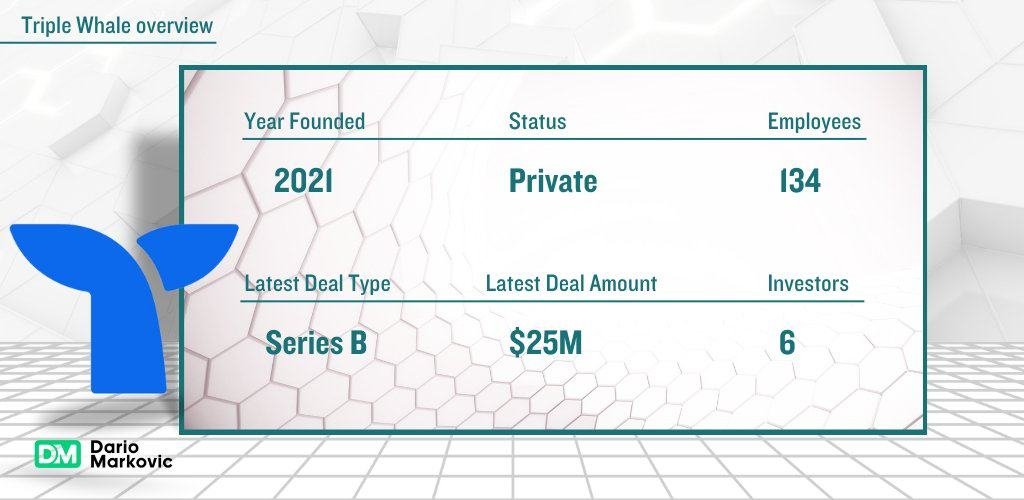
Key Features
Triple Whale offers the following features:
- Free Dashboard – Provides a single view of Shopify, Meta, and email data.
- Post-Purchase Surveys – Gathers direct customer feedback to improve attribution.
- Inventory Tracking – Identifies low-stock items and helps optimize ad spend.
- Triple Whale Pixel – Enhances attribution accuracy with in-depth tracking.
- AI-Powered Insights – Uses machine learning to detect trends and anomalies.
Triple Whale’s powerful features help businesses optimize decision-making and maximize efficiency. Check out Triple Whale alternatives..
Its centralized analytics dashboard integrates Shopify, Meta, email, and other data sources, offering a complete performance overview. Post-purchase surveys gather customer insights, enhancing marketing strategies.
Profit and sales cycle tracking enables real-time monitoring of marketing ROI, while customer journey analysis provides deep insights into user behavior.
Additionally, inventory tracking helps brands manage stock levels, ensuring ad spend aligns with available products. These features collectively empower businesses to drive smarter, data-backed growth.
Pros
- Unified Dashboard – Integrates Shopify, Meta, email, and more for a complete view.
- Easy to Use – Simple setup and intuitive interface.
- Post-Purchase Surveys – Captures customer insights for better marketing.
- Inventory Tracking – Monitors stock levels to optimize spending.
- Affordable – Lower pricing than Northbeam, ideal for growing brands.
Cons
- Limited Cross-Platform Support – Primarily for Shopify, with fewer integrations for other platforms.
- Basic Attribution – In-platform attribution may over-report some channels.
- Limited Data – Lacks advanced analytics and predictive modeling like Northbeam.
- Shorter Attribution Windows – Limited tracking compared to competitors with longer periods.
- Scaling Costs – Affordable for small brands, but increases with data complexity.
Pricing
Triple Whale offers four pricing editions:
Growth – Triple Whale is free up to $500K in GMV (Gross Merchandise Value). After reaching this threshold, the plan costs $2,990 per year. For more detailed pricing information, you can check their website directly.
Triple Whale’s pricing page features a table or calculator showing how prices change for each plan once GMV exceeds $500K.
The Pro plan starts at $2,990/year
The Premium plan at $3,790/year,.
The Premium Plus plan at $6,790/year, all for businesses with up to $500K GMV.
After that, the prices increase. For full details, you can check the table on their pricing page.
Triple Whale offers a “Recommended” Founders Dash plan, which is free to try. It includes access for 2 users, benchmarks, core ad channels, and a 12-month look-back.
For more details, check out Triple Whale pricing here.
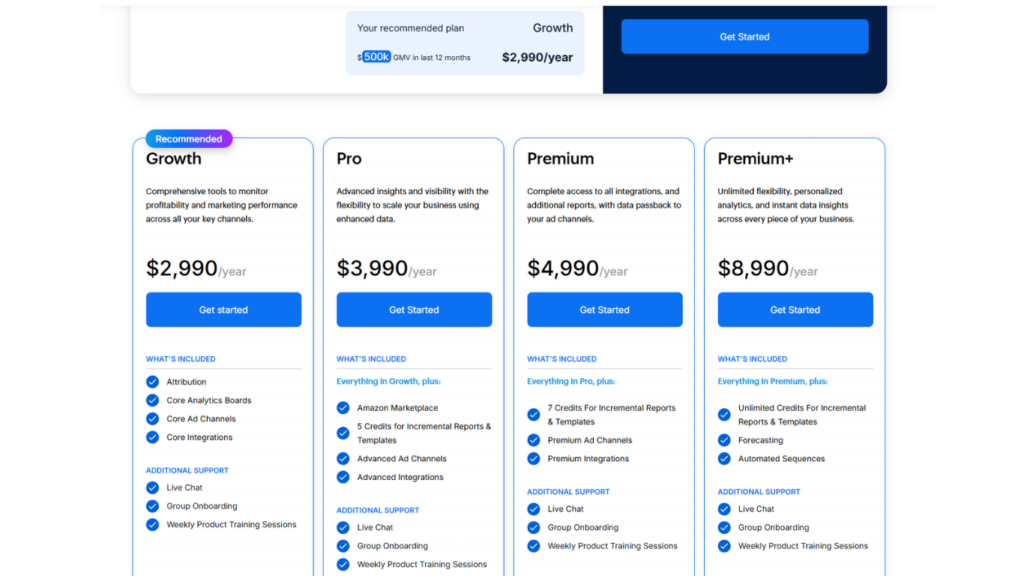
Target Market
Triple Whale’s target demographic consists of the following:
- E-commerce businesses that seek real-time, accurate financial reporting
- E-commerce businesses that seek ecommerce analytics
- E-commerce businesses that seek customer data
The company focuses on small—and mid-sized businesses because it is committed to enabling these enterprises to track customer behavior and democratize AI and automation.
Triple Whale is well-suited for small—to mid-sized e-commerce businesses due to its essential features, including automation, artificial intelligence, and robust data analysis capabilities customized to their requirements.
Their integration with Quickbooks accurately aligns with small to medium-sized enterprises’ accounting preferences and requirements.
Attribution and Reporting Comparison
Now, let’s take a closer look at how Northbeam and Triple Whale measure up in attribution and reporting. Northbeam employs multiple attribution models to analyze various aspects of marketing funnels and customer journeys.
They emphasize the importance of attributing sales conversions to the appropriate campaigns based on clicks, views, stages, influencers, and partnerships.
Conversely, Triple Whale employs a unique model named Triple Attribution + Views, designed explicitly for Facebook ad data. It concentrates on click-through and view interactions.
Triple Whale also offers exclusive reporting features, such as Retention reports, leveraging the Triple Pixel technology.
Northbeam's Approach
The platform’s conversion data reports are extensive, offering a comprehensive view of tracked metrics and guidance on utilizing the Northbeam Dashboard.
The reports provide features such as Custom Labels for data organization, measurement of conversion lift and lag, and monitoring of CAC across the Northbeam Overview, Sales, and LTV Pages, significantly enhancing the reports’ depth and utility.
This diverse range of components facilitates a thorough comprehension of marketing funnels, customer journeys, and marketing effectiveness.
Northbeam’s attribution software offers a comprehensive model that encompasses several components, such as:
- Simple Attribution Models
- Multi-Touch Attribution Models
- Clicks & Views machine learning model
- The use of UTM parameters for detailed data analysis
Triple Whale's Approach
Triple Whale’s real-time data processing capability offers real-time data visualization and insights into API performance, usage, and errors.
Their all-channel attribution feature gives businesses a more comprehensive and precise understanding of the customer’s journey.
The Triple Whale’s attribution model is a distinctive methodology that streamlines marketing processes by prioritizing the allocation of advertising credit through a straightforward and easily interpretable model.
This approach facilitates marketing campaigns by attributing full credit to the last ad click on each channel, clarifying the touchpoints with the most significant impact on conversions.
Integration Capabilities
Seamless integration with key platforms is essential for accurate data tracking and streamlined marketing analytics.
Both Northbeam and Triple Whale offer robust integrations, allowing eCommerce brands to centralize data from multiple sources.
However, their focus and compatibility differ, making it important to evaluate which solution best fits your business needs.
Northbeam Integrations
Northbeam integrates with major ad platforms, including Shopify and Facebook, ensuring smooth data synchronization and comprehensive analytics.
Its native connections provide enhanced tracking capabilities across these platforms, helping businesses optimize their marketing efforts.
Additionally, Northbeam offers multiple customer support channels, including:
- Knowledge base for self-service troubleshooting
- Email support at success@northbeam.io
- Live chat support benefits for real-time assistance
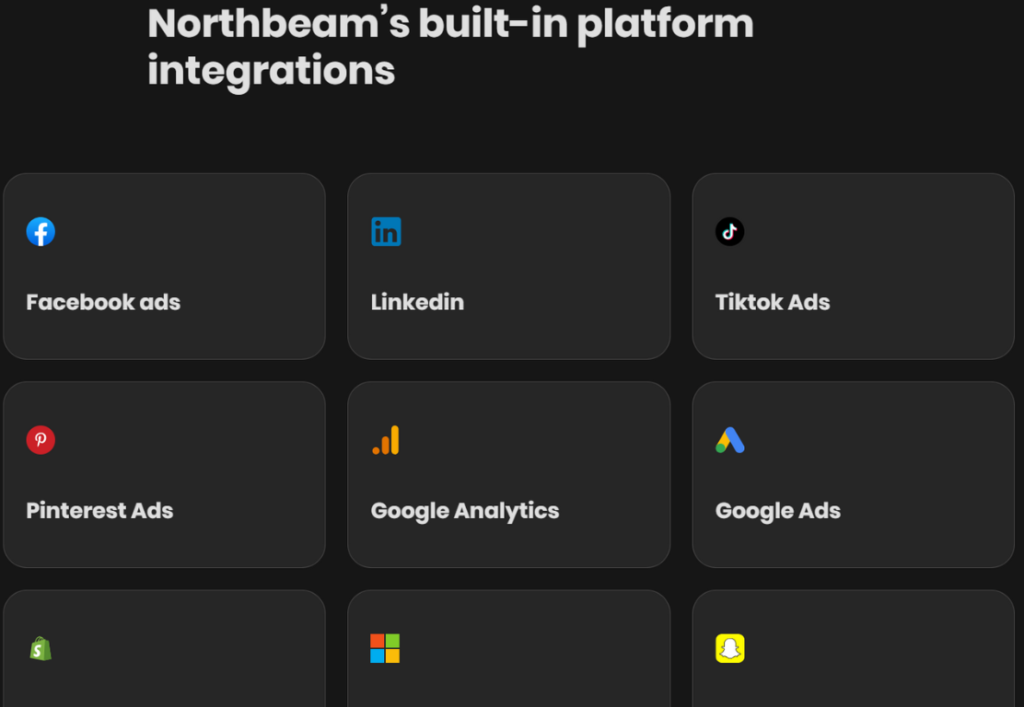
Triple Whale Integrations
Triple Whale supports a wider range of integrations, making it a versatile choice for businesses relying on multiple marketing and analytics tools.
Some of its key integrations include:
- Google Ads
- Snapchat
- TikTok
- Shopify
- Slack
- Attentive
- Google Sheets
These integrations allow businesses to collect and analyze fulfillment metrics, shipping costs, net profit, and customer response data in a centralized dashboard.
By consolidating data from multiple sources, Triple Whale enhances decision-making and marketing efficiency.
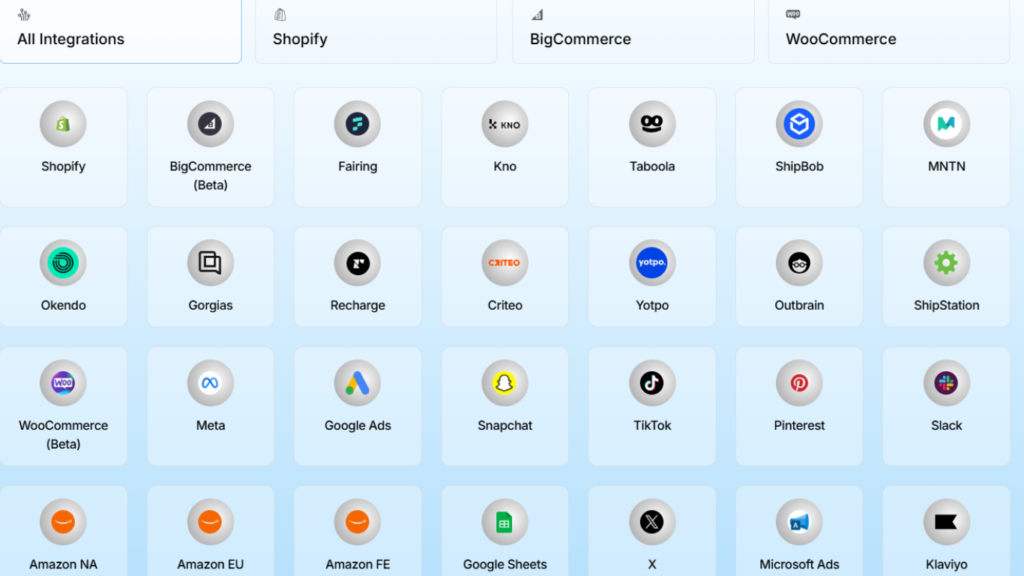
Ease of Use Comparison
In terms of user-friendliness, both Northbeam and Triple Whale possess distinctive advantages. Northbeam’s user interface is intuitive and easy to navigate, making it a top choice for marketers who prioritize user-friendly design.
On the other hand, Triple Whale’s user interface is known for its speed, ease of use, and effectiveness in saving users time.
With its robust data modeling features and AI-driven analytics, Triple Whale’s user-friendly interface allows for a seamless user experience.
Northbeam's User Experience
Northbeam’s onboarding process includes the following steps:
- Thorough and structured onboarding to ensure new users are well-acquainted with the platform.
- Easy-to-navigate user interface.
- Visual interfaces for ad creative analysis.
- Ability to view, sort, and filter ad creatives across channels.
Triple Whale's User Experience
Triple Whale’s customizable dashboard offers comprehensive campaign management and KPI tracking capabilities.
The zero-code metric builder streamlines the creation of custom metrics, allowing users to organize sections and metric tiles according to their preferences.
Pricing Comparison: Northbeam vs Triple Whale
Both Northbeam and Triple Whale offer tiered pricing models, but their structures differ based on features, GMV (Gross Merchandise Value) limits, and scalability.
Here’s a breakdown:
Triple Whale Pricing
Triple Whale follows an annual subscription model with pricing based on GMV:
- Founders Dash (Free) – Includes core analytics, two users, benchmarks, and 12-month lookback.
- Pro ($2,990/year) – Advanced insights and analytics, up to $500K GMV. After $500K GMV, it increases to $3,990/year.
- Premium ($3,790/year) – Enhanced features for scaling brands, up to $500K GMV. Increases to $4,990/year after $500K GMV.
- Premium Plus ($6,790/year) – The most comprehensive plan, up to $500K GMV. Increases to $7,990/year after exceeding $500K GMV.
- Custom Pricing – Available for brands exceeding $1M GMV with tailored features.
Triple Whale also offers a 10% discount on annual plans. A pricing table/calculator is available on their website to estimate costs based on GMV.
Northbeam Pricing
Northbeam does not publicly list its pricing and instead offers custom quotes based on business size, data needs, and GMV.
However, users report that pricing starts at around $400–$1,000/month, making it a more premium solution compared to Triple Whale.
Northbeam focuses on highly scalable, AI-driven attribution and predictive analytics, making it a strong choice for enterprise brands.
Key Pricing Takeaways
- Triple Whale is more transparent with clear annual pricing based on GMV, making it ideal for small to mid-sized brands.
- Northbeam requires custom pricing but is generally positioned at a higher price point with more advanced analytics.
- Triple Whale offers a free plan (Founders Dash), while Northbeam has no free option.
Customer Support and Community
Triple Whale provides customer support through a contact form and ensures timely responses.
Northbeam Customer Support
Northbeam offers various customer support channels, including their knowledge base and email support at success@northbeam.io. They also provide a live chat support option.
Customers can contact their support team through their knowledge base or by submitting a support ticket.
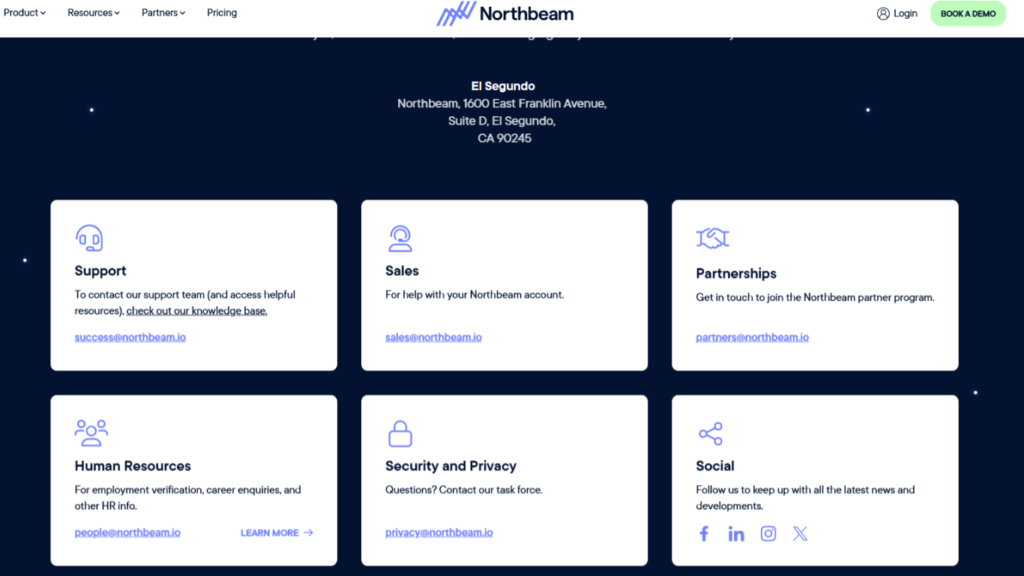
Triple Whale Customer Support
Triple Whale fosters its community through a comprehensive guide on community building, dedicated Facebook groups for idea exchange, and valuable insights from the Head of Community at Triple Whale.
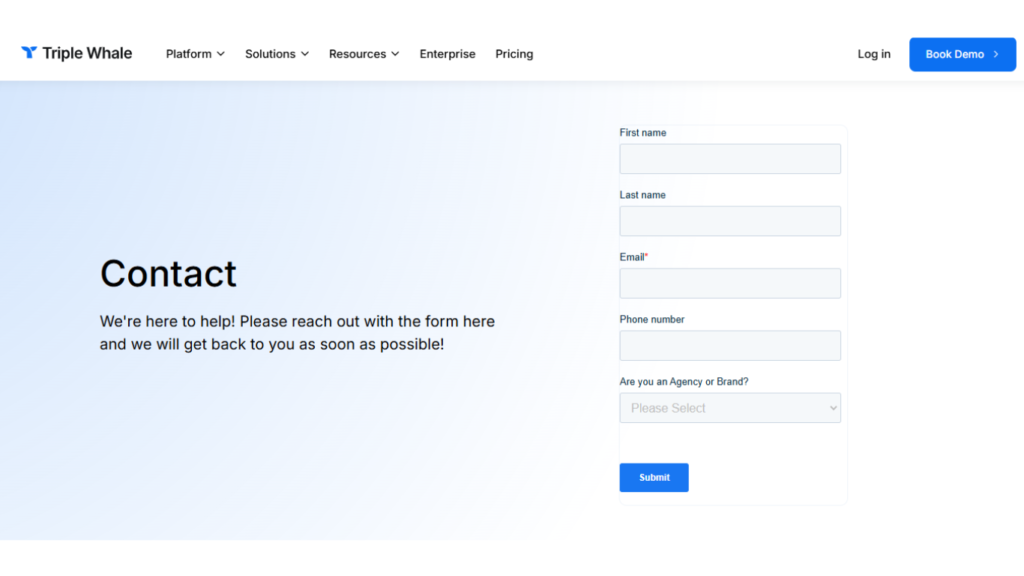
Alternatives to Consider
While Triple Whale and Northbeam are leading analytics platforms for ecommerce brands, they may not fit every business’s needs or budget.
Several other tools offer robust attribution, tracking, and data visualization capabilities, often with unique features that cater to specific use cases.
Whether you need deeper insights into customer journeys, more affordable pricing, or broader platform compatibility, the following alternatives provide strong options for ecommerce and digital marketing analytics.
1. Hyros
Hyros is best for influencers and digital businesses, offering AI-powered attribution and multi-platform tracking.
It integrates with over 6,000 apps via Zapier, making it highly versatile but expensive for small businesses
- Best suited for info product businesses (courses, coaching, high-ticket sales).
- Call tracking feature helps track sales calls and optimize lead generation.
- Used by big names like Tony Robbins and Grant Cardone.
2. Rockerbox
Rockerbox is an attribution platform that centralizes marketing data across multiple channels, including digital and offline campaigns.
It offers cross-channel analytics, customer journey insights, and integrations with platforms like Shopify and WooCommerce.
It supports Media Mix Modeling (MMM) for data-driven decision-making and is highly scalable for businesses of all sizes
- Real-time data updates every 5 minutes.
- Supports multi-channel attribution models (first-touch, last-touch, linear, and custom).
- Over 200+ integrations with ad networks, Shopify, WooCommerce, Google Ads, Facebook, Amazon, etc.
- AI-powered automation to optimize campaigns.
- Offers a 14-day free trial, and pricing starts at $149/month.
3. Wicked Reports
Wicked Reports is designed for e-commerce and subscription businesses, offering first-party data tracking, long-term attribution windows, and revenue-based attribution modeling.
- Attribution Time Machine – Analyzes historical marketing data to track conversions over time.
- Custom Attribution Models – Supports first-touch, last-click, and multi-touch tracking.
- Funnel Vision – Maps customer journeys to optimize marketing touchpoints.
- AI-Powered Insights – Feeds conversion data to Google & Facebook Ads for better ad performance.
- First-Party Data Tracking – Adapts to privacy changes by using first-party data for accurate attribution.
My Experience with Northbeam vs Triple Whale
I’ve worked extensively with Northbeam and Triple Whale across multiple eCommerce brands. Both have unique strengths depending on business size and complexity.
Northbeam: Best for Large-Scale Brands
For enterprise-level brands, Northbeam’s multi-touch attribution and media mix modeling provide detailed insights, optimizing ad spend across multiple channels. I used Northbeam to improve ROAS by 34% for a DTC brand by correcting attribution discrepancies across platforms. However, it requires a dedicated team and is best suited for businesses with significant ad budgets.
Triple Whale: Ideal for Shopify Brands
For small to mid-sized Shopify brands, I helped as the CEO of Eric Javits scale from $0 to $50M in sales in 32 months using Triple Whale.
Its real-time analytics, easy Shopify integration, and post-purchase surveys made it the perfect tool for fast growth. We achieved a 23% improvement in MER within two months, thanks to its user-friendly dashboard and AI-driven insights.
Final Verdict: Which One Do I Recommend?
Use Northbeam if you’re an enterprise brand with large ad budgets and need high-precision attribution across multiple platforms.
Use Triple Whale if you’re a fast-growing Shopify brand that wants an easy-to-use, real-time analytics tool to optimize ad spend.
Both tools are powerful in their own right, but the right choice depends on your brand’s stage, scale, and data needs.
FAQ
Hyros and Triple Whale are both powerful eCommerce analytics platforms, but they serve different business needs.
Hyros focuses on AI-powered attribution and multi-platform tracking, making it ideal for digital businesses and influencers. It is best for businesses looking for deep customer journey insights and cross-channel tracking.
On the other hand, Triple Whale is designed for Shopify brands, offering an easy-to-use dashboard for real-time financial reporting and attribution. Triple Whale is more accessible and better suited for small to mid-sized businesses.
Triple Whale is great for Shopify businesses looking for an intuitive, user-friendly analytics platform. It provides real-time insights, post-purchase surveys, inventory tracking, and powerful attribution models.
These features help brands optimize ad spend, improve marketing efficiency, and drive smarter growth, especially for small to mid-sized eCommerce businesses.
Triple Whale attribution uses a multi-touch model focused on last-click attribution for Shopify data. It attributes conversions based on the last click or interaction a customer had before purchasing.
This model is particularly useful for understanding the effectiveness of each touchpoint in your marketing campaigns, especially for businesses using Meta, Google, and other platforms.
Yes, Northbeam is worth it for large-scale brands or businesses running omnichannel campaigns with complex marketing needs. It provides in-depth attribution analysis, predictive analytics, and customizable models to optimize ad spend.
However, it comes at a premium price, so it’s best suited for businesses with larger marketing budgets and dedicated teams for data analysis.
Hyros is worth it for businesses that require advanced attribution and multi-platform tracking. It’s particularly useful for influencers and digital marketing businesses that need to track data across a wide range of advertising channels.
However, it comes at a higher price point, so it’s better suited for larger brands or businesses with complex marketing needs.

